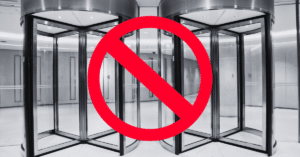In the complex world of industrial operations, where heavy machinery and intricate electrical systems are the norm, the importance of safety cannot be overstated. Among the crucial practices for ensuring a safe work environment, Lockout-Tagout (LOTO) stands out as a pivotal procedure. Its role in preventing workplace incidents is invaluable, particularly during the maintenance of equipment.
LOTO is a systematic approach designed to secure employees’ safety by methodically shutting down equipment and machinery and isolating their energy sources. This process significantly reduces the risk of accidental equipment restarts, which can be dangerous during maintenance tasks.
The Dual Protection of LOTO
LOTO isn’t just a safety measure; it’s also a protective shield for both workers and machinery. By preventing unexpected startups, it mitigates the risk of injuries from moving parts, electric shocks, or exposure to hazardous materials. For the machinery, LOTO ensures that costly equipment is not damaged due to improper shutdown. Moreover, adhering to LOTO procedures is not just a safety practice but a compliance necessity. Ignoring these procedures can lead to severe regulatory fines.
Implementing LOTO: A Step-by-Step Guide
Implementing LOTO involves a series of detailed steps, each critical to mitigating risks effectively:
- Pre-Work Planning: Before any maintenance begins, all energy sources connected to the equipment must be identified, including electrical, hydraulic, pneumatic, and thermal sources. This information is crucial for creating a comprehensive LOTO procedure.
- Alerting Employees: Workers potentially affected by LOTO must be informed about the upcoming shutdown to ensure awareness and preparedness.
- Shutting Down Equipment: Equipment should be turned off using standard procedures by trained employees familiar with the machinery.
- Isolation: Disconnecting equipment from all its energy sources is essential to ensure complete deactivation.
- Lockout: Apply locks to all energy-isolating devices, accessible only to authorized personnel.
- Tagout: Attach tags to the lockout mechanism, indicating the authorized person responsible, the reason for lockout, and a clear warning not to remove the lock.
- Ensuring Total Shutdown: A competent person must verify that all energy sources are fully disconnected and there’s no risk of accidental activation.
- Maintenance: Once safety is confirmed, maintenance work can commence.
- Restoration: After maintenance, the authorized person can remove the locks and tags, and energy can be restored for normal operation.
- Testing: Post-restoration, the equipment should be tested to confirm safe and effective functioning.
Training and Education: Key to LOTO Success
Effective LOTO implementation requires comprehensive training for all involved employees. This education should emphasize the importance of LOTO in maintaining safety, how to perform the procedure correctly, and recognizing various energy sources for proper de-energization. Regularly reviewing and updating LOTO procedures is essential, especially when there are changes in equipment, energy sources, or safety regulations. Encouraging employees to report incidents or near misses is also vital for continuous improvement of the LOTO program.
Conclusion: Committing to Safety with LOTO
In the end, a successful LOTO program hinges on robust training and a culture of safety awareness. By implementing and continuously refining LOTO procedures, industries can significantly enhance workplace safety, protect valuable equipment, and comply with regulatory standards. This commitment to safety is not just a protocol but a testament to the value placed on every employee’s well-being.
Continuous Improvement and Immersive Training in Action
Construction is a dangerous business. Risks are constant, standards shift, and complacency can be deadly. For Jennifer Lastra, a U.S. Navy veteran and current CEO of 360 Immersive, corporate-style training falls far short. True safety begins with continuous improvement, supported by real engagement on the job. Training Should Go Beyond a Click-Through Box “Corporate training…
Continue Reading Continuous Improvement and Immersive Training in Action
Breaking the Cycle of Revolving Door Safety Teams
You’re in the middle of your busiest season, desperately trying to keep up with deadlines, and out of the blue, your only safety person submits their notice. Now you’re left without safety personnel, putting your workforce at risk, and potentially falling out of compliance or breaching contractual obligations. What’s your next move? Do you appoint…
Continue Reading Breaking the Cycle of Revolving Door Safety Teams
Why Does Your Company Need a Safety Team?
The construction industry is undeniably a risky one. Even for simple construction jobs, the risks posed to employees are numerous and continuously evolving. Though some companies may be hesitant to invest in a dedicated safety team, having one provides numerous benefits pertaining to employee health, hazard reduction and company culture enrichment. So let us ask…












